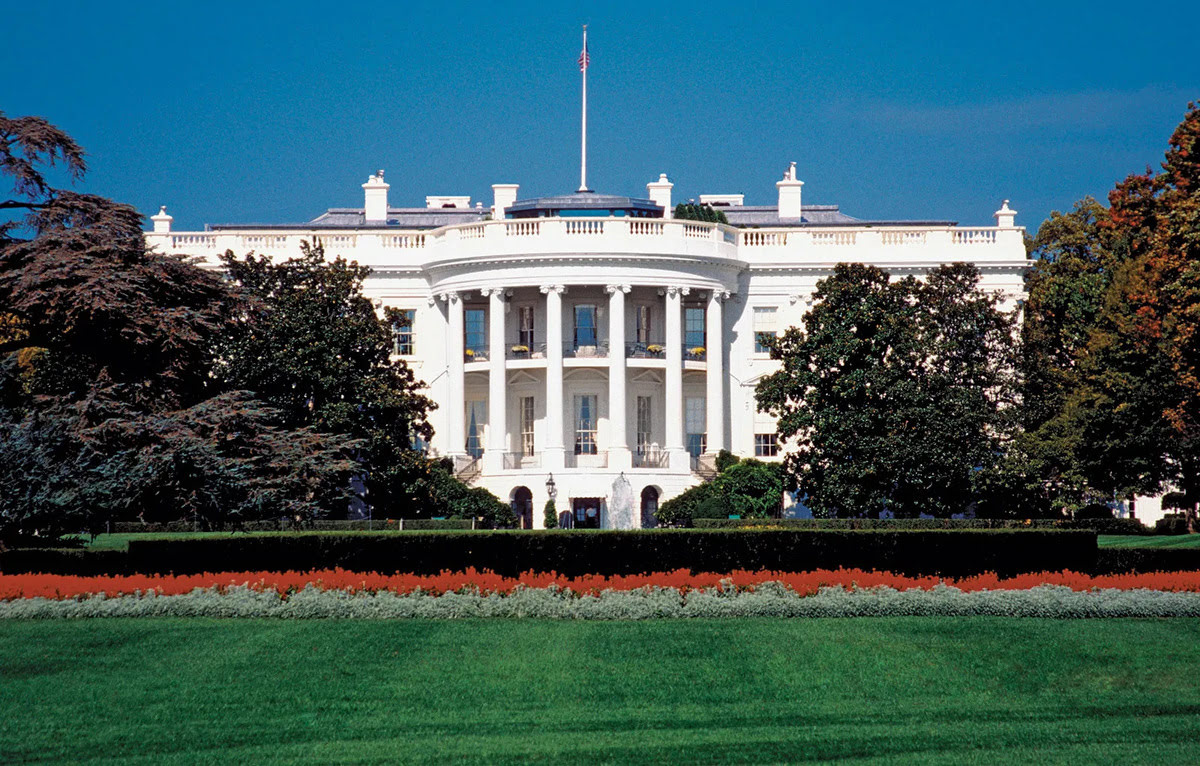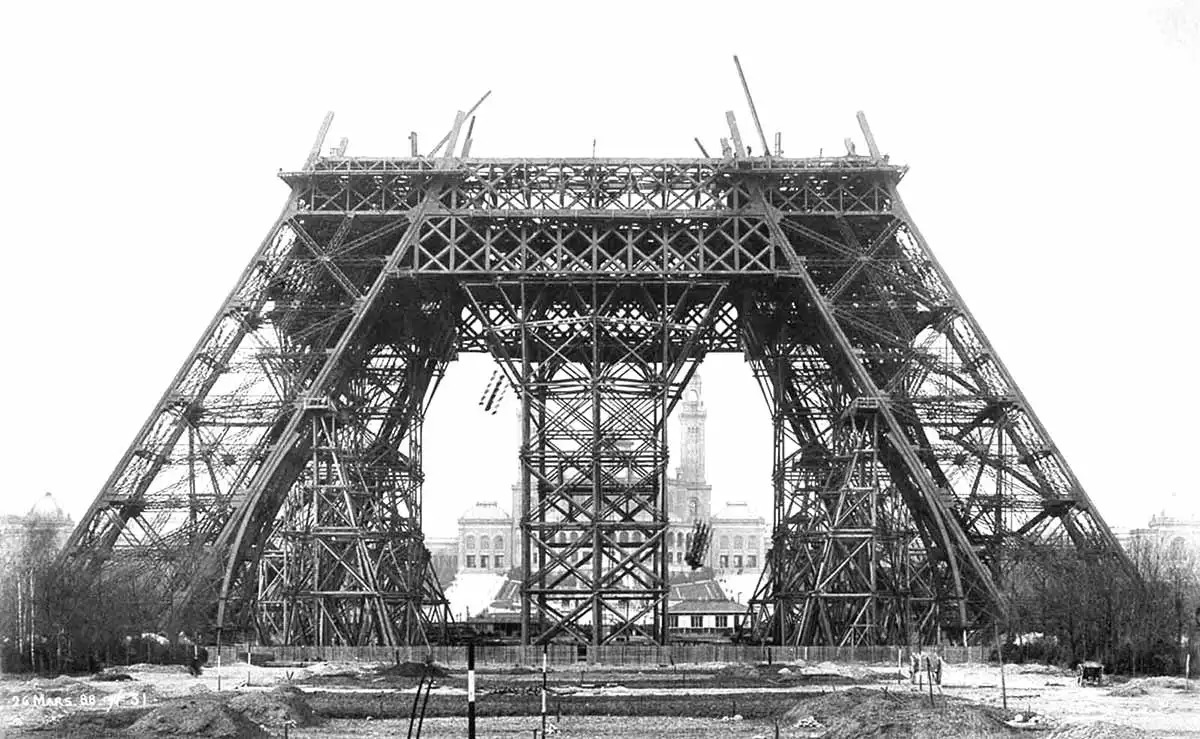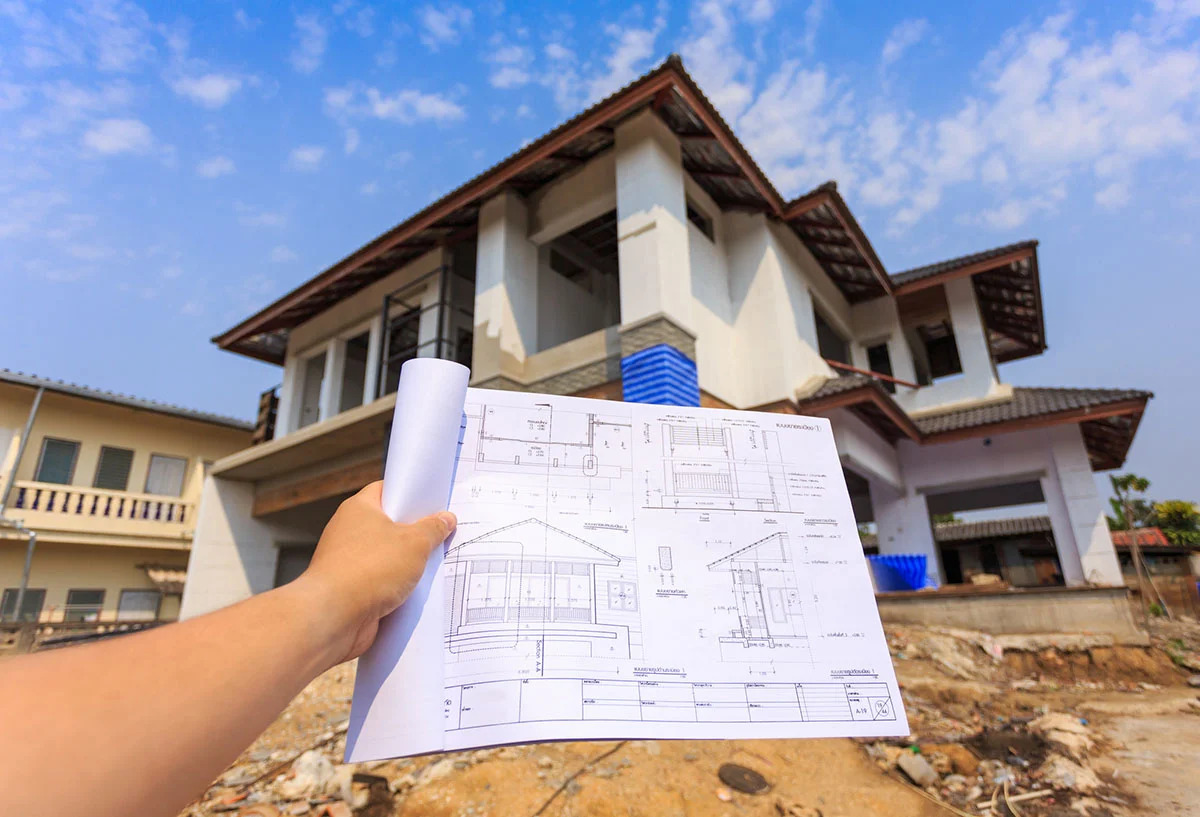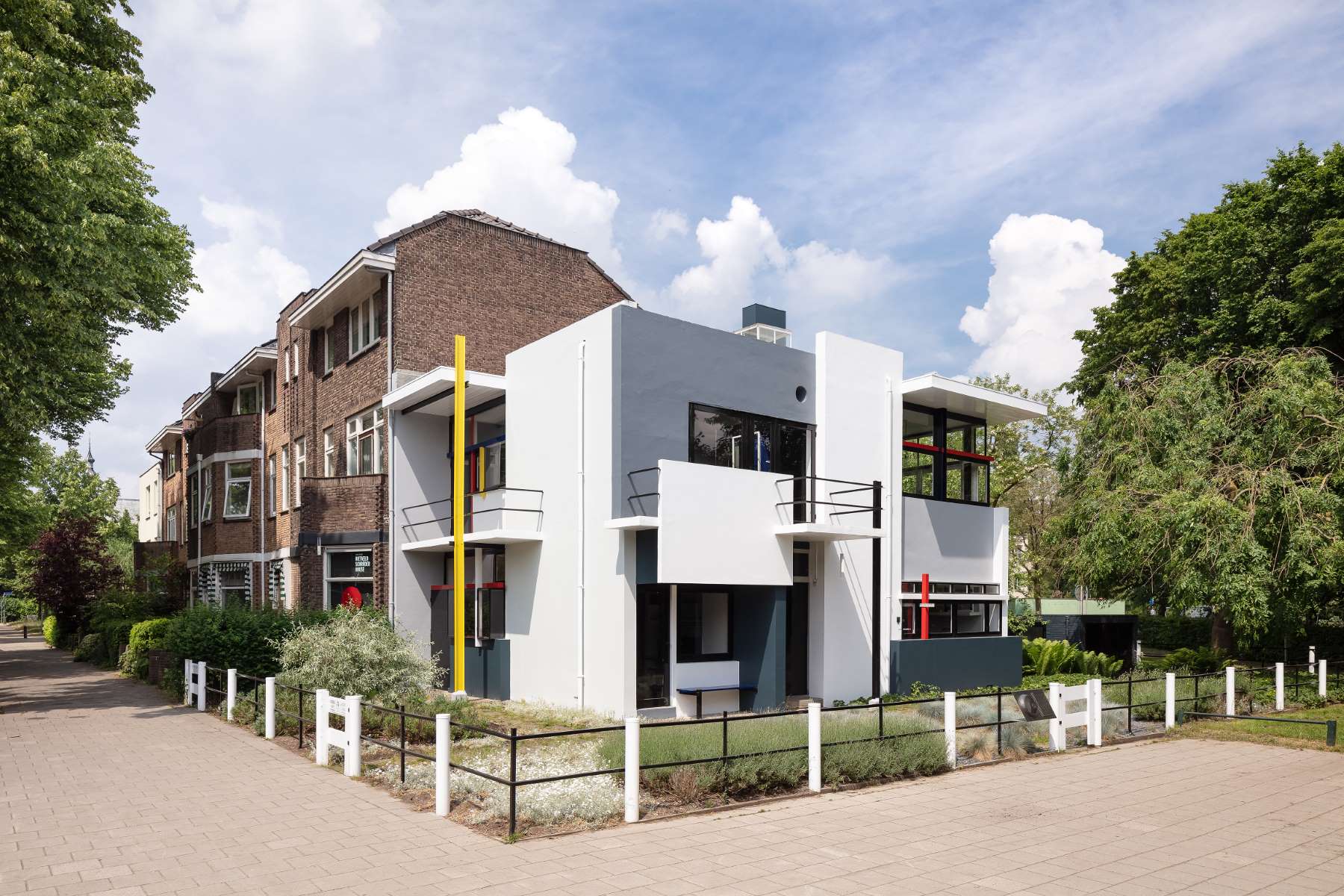Home>diy>Building & Construction>When Did The Construction Of The White House Begin


Building & Construction
When Did The Construction Of The White House Begin
Modified: December 7, 2023
Discover the historic origins of the White House and its beloved building construction. Uncover when this iconic symbol of American democracy began its construction journey.
(Many of the links in this article redirect to a specific reviewed product. Your purchase of these products through affiliate links helps to generate commission for Storables.com, at no extra cost. Learn more)
Introduction
The White House, with its iconic neoclassical design, is not only the official residence of the President of the United States but also a symbol of American democracy and power. The construction of this historic building began over two centuries ago and has since become an architectural marvel. In this article, we delve into the fascinating history of when the construction of the White House began, the challenges faced during its construction, and the timeline of its completion.
The idea of a presidential residence had been discussed since the early days of the United States. However, it wasn’t until 1790, with the signing of the Residence Act by President George Washington, that plans for the construction of the White House were set into motion. The Act specified the need for a permanent residence for the President, and a site along the Potomac River in the newly established city of Washington, D.C., was chosen as the location for this historic structure.
Before the construction could begin, several important decisions had to be made, including selecting the site and determining the design and architectural style of the building. These choices would play a crucial role in shaping the iconic structure that we recognize today as the White House.
Stay tuned as we explore the historical background behind the construction of the White House, uncover the challenges faced by its builders, and uncover the timeline of how this enduring symbol of American democracy came to be.
Key Takeaways:
- The construction of the White House began in 1792, facing challenges such as marshy conditions, financial strains, and setbacks, but ultimately stood as a symbol of American democracy and resilience.
- The White House’s neoclassical design, construction challenges, and historical significance make it an enduring symbol of American democracy, showcasing the nation’s ambition and determination.
Historical Background
The White House has a rich and storied history that dates back to the early years of the United States. After gaining independence from Britain in 1776, the Founding Fathers envisioned a capital city that would symbolize the fledgling nation’s independence and power.
In 1790, President George Washington signed the Residence Act, which designated a site along the Potomac River as the future location of the nation’s capital. The newly established city, named Washington, D.C., would serve as the seat of the federal government and would house the President and other important government officials.
The construction of the White House was a vital component of the vision for the new capital. It was intended to be a symbol of the nation’s strength and democracy, as well as a functional residence for the President and his family.
The responsibility for designing and constructing the White House fell on the shoulders of several notable figures. The primary architect was James Hoban, an Irish-born architect who won a competition to design the presidential residence. Hoban was heavily influenced by neoclassical architecture, which was a popular style during that era.
Inspired by the neoclassical designs of European palaces and public buildings, Hoban created a design that featured grand columns, a central portico, and symmetrical wings. His vision aimed to convey a sense of elegance, stability, and democracy.
Construction of the White House commenced in 1792, with workers using sandstone sourced from nearby quarries. The process was not without its challenges, as the site was prone to marshy conditions and faced logistical difficulties due to the lack of infrastructure in the nascent city.
Despite these challenges, progress continued on the construction of the White House, and the building gradually began to take shape. However, the project faced numerous setbacks, including financial issues and labor shortages.
It wasn’t until 1800 that President John Adams became the first President to reside in the partially completed White House. However, his time in the residence was short-lived, as the government moved to Philadelphia the following year and the White House was left vacant.
It took several more years and the efforts of subsequent Presidents for the construction of the White House to be fully completed and for it to become the proud symbol of American democracy that it is today.
The Selection of the Site
The selection of the site for the construction of the White House held significant importance in shaping the history and symbolism of this iconic building. The chosen location was a carefully considered decision that had lasting implications for the development of the nation’s capital.
The site chosen for the White House is situated on a plot of land along the Potomac River in what is now known as Washington, D.C. This area was selected for several reasons, including its geographical position and the vision of creating a purpose-built capital city.
In 1790, when President George Washington signed the Residence Act, it authorized the establishment of a national capital on the banks of the Potomac River. The location was strategically chosen to be centrally located between the northern and southern states, symbolizing a unified nation.
The site selection process involved an evaluation of various factors, including accessibility, security, and the potential for expansion. The chosen area was relatively undeveloped, allowing for a purposeful and planned urban layout for the new capital.
The site also held historical significance, as it was near the location where the French and American troops had camped during the Revolutionary War. This connection to the nation’s history added to the symbolic importance of the site.
One of the key figures involved in selecting the site was Pierre Charles L’Enfant, a French-born architect and engineer who was tasked with designing the layout of the city. L’Enfant envisioned a grand capital city that would rival the great cities of Europe in beauty and purpose.
He proposed a design that emphasized grand boulevards, broad public spaces, and impressive government buildings. The site chosen for the White House, at the intersection of these grand avenues, would become a vital component of L’Enfant’s overall vision for the capital.
Ultimately, the selection of the site for the White House was a strategic decision that aimed to establish a symbolic and functional center for the nascent nation’s government. It would serve not only as the residence for the President but also as a representation of American democracy and power.
Today, the White House stands as a testament to the foresight of those who chose its location, and its commanding presence along the Potomac River continues to signify the strength and endurance of the United States.
The Design and Architectural Style
The design and architectural style of the White House played a crucial role in shaping its iconic appearance and enduring legacy. The vision for the building’s design was to create a structure that embodied the ideals of democracy, while also exuding elegance and grandeur.
The primary architect responsible for the design of the White House was James Hoban, an Irish-born architect who won a competition for the project. Hoban drew inspiration from the neoclassical architectural style that was popular during the late 18th century.
Neoclassical architecture was a revival of the classical architectural styles of ancient Greece and Rome. It was characterized by its symmetrical and balanced designs, prominent columns, and use of classical motifs such as pediments and friezes.
Hoban’s design for the White House embraced many of these neoclassical elements, combining them with his own artistic vision. The building features a grand central portico with columns, a large dome, and two symmetrical wings.
The exterior of the White House is clad in white-painted sandstone, a material that gives the building its iconic appearance. The use of white stone was a deliberate choice, symbolizing purity, strength, and unity.
One of the most distinctive features of the White House is the South Portico, which is adorned with a semicircular balcony. This architectural element adds a touch of elegance to the design and has become an iconic backdrop for presidential speeches and events.
Inside the White House, the architectural style is equally impressive. The building features grand halls, stately staircases, and beautifully decorated rooms that reflect different design influences from different periods. From the neoclassical-inspired Blue Room to the more contemporary style of the Oval Office, each room tells a story of its own.
Over the years, the White House has undergone several renovations and additions, each one contributing to the evolution of its architectural style. Some notable changes include the addition of the West Wing by President Theodore Roosevelt in 1902 and the construction of the East Wing by President Franklin D. Roosevelt in 1942.
The design and architectural style of the White House have not only left an indelible mark on the landscape of Washington, D.C., but have also become a representation of American democracy and power. Its iconic appearance continues to inspire awe and admiration from visitors and serves as a symbol of the nation’s rich history and enduring ideals.
The construction of the White House began in 1792 and was completed in 1800. It was designed by James Hoban and has been the official residence of the President of the United States since John Adams.
Construction Challenges
The construction of the White House, like any large-scale building project, faced its fair share of challenges and obstacles. From logistical issues to financial constraints, the process of bringing the vision of this iconic residence to life was not without its difficulties.
One of the primary challenges faced during the construction of the White House was the marshy conditions of the site. The chosen location, near the Potomac River, had a high water table and was prone to flooding. This made it difficult to stabilize the ground and create a solid foundation for the building.
Furthermore, the lack of infrastructure in the newly established city of Washington, D.C., presented logistical challenges. The transportation of construction materials and the coordination of labor were complicated by the undeveloped nature of the area.
The availability of skilled labor was also a concern. In the early years of the construction, there was a shortage of experienced workers, particularly in the field of stone masonry. This led to delays and setbacks as the builders struggled to find skilled craftsmen to complete the intricate stonework.
Another significant challenge was the financial strain on the government. The construction of the White House required significant funds, and the cost often exceeded the allocated budget. This led to delays in the construction process as the government grappled with funding issues and had to source additional resources.
The War of 1812 added another layer of complexity to the construction of the White House. During the conflict, British troops set fire to the building in 1814, severely damaging the structure. The restoration and reconstruction efforts that followed were time-consuming and further contributed to the delays in completing the project.
Despite these challenges, the construction of the White House persevered. Skilled craftsmen were eventually recruited, marshy ground was fortified, and the necessary funds were secured. The dedication and determination of those involved in the project ensured that the construction continued and the vision for the White House remained intact.
Today, the challenges faced during the construction of the White House are a testament to the enduring spirit of resilience and ingenuity. They serve as a reminder that even in the face of daunting obstacles, human determination and perseverance can triumph, resulting in the creation of magnificent structures that stand the test of time.
Construction Timeline
The construction timeline of the White House spans several decades, with various phases and significant events shaping the process. From the laying of the foundation to the official completion of the building, here is an overview of the key milestones in the construction of this iconic residence.
- 1792: Construction begins on the White House. Irish-born architect James Hoban oversees the project.
- 1800: President John Adams becomes the first President to reside in the partially completed White House.
- 1814: During the War of 1812, the British set fire to the White House, causing extensive damage to the structure.
- 1815-1817: Reconstruction and restoration efforts are undertaken to repair the damage inflicted by the British attack.
- 1824: The North Portico is added to the White House, enhancing its grandeur and providing a formal entrance.
- 1902: President Theodore Roosevelt initiates the construction of the West Wing, which includes offices for the President’s staff.
- 1942: President Franklin D. Roosevelt adds the East Wing to the White House to accommodate additional office space.
- 1952-1952: President Harry S. Truman oversees an extensive renovation of the interior, including the rebuilding of the Truman Balcony.
- 1962: First Lady Jacqueline Kennedy leads a restoration and renovation project to preserve and enhance the historical integrity of the White House.
- 1969-1970: President Richard Nixon approves the construction of an underground White House Conference Center.
- 1992-1995: Major renovations are undertaken during the administrations of Presidents George H. W. Bush and Bill Clinton to update infrastructure and address structural issues.
- 2020-2021: Exterior renovations take place, including the replacement of the White House roof.
Over the course of its construction, the White House has experienced numerous challenges, setbacks, and renovations. However, through the dedication and perseverance of architects, craftsmen, and government officials, it has withstood the test of time and remained an enduring symbol of democracy and power.
Today, the White House continues to evolve and adapt to the changing needs of each administration. It serves as the official residence, office space, and a historic landmark that attracts visitors from around the world, eager to witness the splendor of this iconic structure firsthand.
Conclusion
The construction of the White House stands as a testament to the vision, determination, and ingenuity of those involved in its creation. From its humble beginnings to its iconic status as the residence of the President of the United States, the White House has become an enduring symbol of American democracy and power.
The selection of the site, the design and architectural style, the construction challenges, and the timeline of its completion all contribute to the rich history and significance of this historic building. From the marshy conditions of the site to the financial strains and setbacks encountered along the way, the construction of the White House was not without its challenges.
However, through perseverance and the dedication of skilled craftsmen and government officials, the White House was able to rise above these obstacles. The construction timeline spans centuries, witnessing changes, renovations, and additions that have shaped the building into what it is today.
Today, the White House not only serves as the official residence of the President but also stands as a symbol of the enduring ideals of American democracy. It has been the backdrop for historic events, monumental decisions, and the seat of power for the leaders of a nation.
Visitors from around the world come to witness the grandeur and beauty of the White House, captivated by its neoclassical architecture and historical significance. The building has undergone renovations and restorations throughout its existence, ensuring its preservation for future generations.
As time goes on, the White House will continue to evolve and adapt, reflecting the changing needs and visions of each administration. Yet, it will always remain a symbol of the democratic values upon which the United States was founded.
In conclusion, the construction of the White House represents the ambition and determination of a nation and the embodiment of the American spirit. It is an architectural marvel that has stood the test of time, symbolizing the strength and resilience of a great nation.
Frequently Asked Questions about When Did The Construction Of The White House Begin
Was this page helpful?
At Storables.com, we guarantee accurate and reliable information. Our content, validated by Expert Board Contributors, is crafted following stringent Editorial Policies. We're committed to providing you with well-researched, expert-backed insights for all your informational needs.















0 thoughts on “When Did The Construction Of The White House Begin”